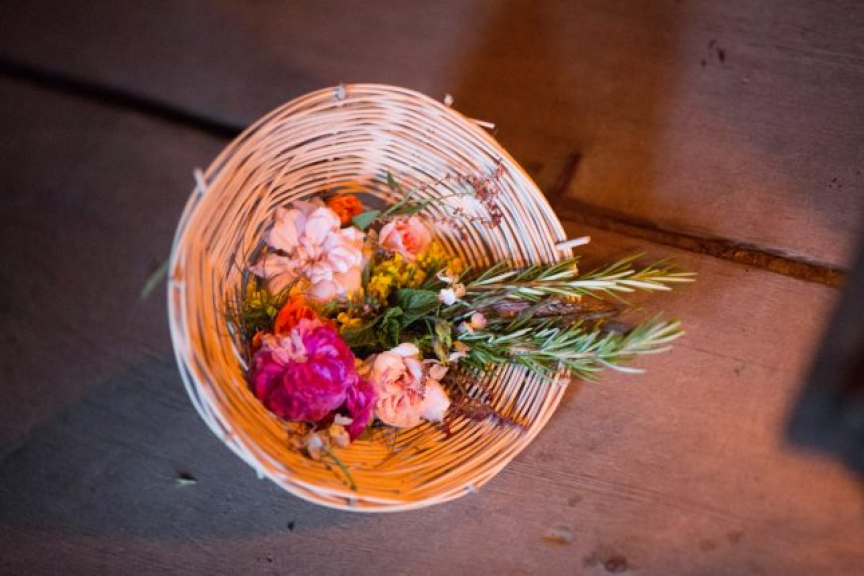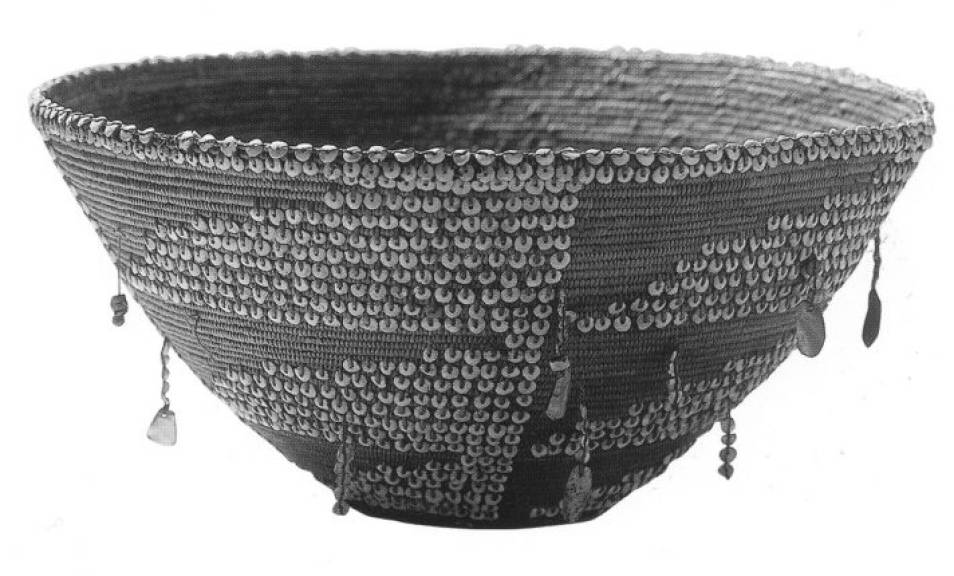Farmers and Gatherers Basket Project
ELP Instructors will supply the reeds and will cut and demonstrate basket weaving. Teachers and parents should watch this basket making video to familiarize themselves with this project ahead of time, so they can help lead the instruction on site (Please note that costumes are no longer part of the ELP program). This is a main onsite project option, this group can choose the Acorn Project or the Species ID Hike as an alternative. If the weather is nice, we encourage students to complete their baskets by the creek to spend time outside the fort and get a feel for the environment that traditional basket weaving could have been done at Metini.
Kashia Basketry – The Kashia have lived in this area for thousands of years. Over this time they have developed very fine basketry. In fact, their basketry is considered a fine art today. In Kashia culture, baskets were so important that the Kashia and other California tribes would conduct controlled wildfires to encourage new, straighter growths of the sedges and grasses used to weave baskets. The Kashia have taken great care of their world around them. They harvested only what they needed for their baskets, and always left many plants to continue growing. For the baskets they use wooly sedge grass roots, willow branches, bulrush root, redwood bark, and redbud for the weaving. They would use wild walnuts, berries, and other plant materials to color the reeds. Baskets were used for cooking, and food preparation, traps for animals and fish, cradles for carrying the babies, toys such as dolls, clothing such as skirts and hats, and for gift giving and ceremonies.
Eric Wilder, a Kashia Pomo tribal member, grandson to Essie Parrish, and local artist has this to say about Kashia Pomo Baskets –
“I remember as a boy that baskets were always around. They would be in Grandma’s kitchen stacked on shelves and tables. My Grandmother, Essie Parrish, was frequently making open-weave baskets to gather food in. I remember using them to wash the sand off of seaweed, to gather acorns, cooking, and trapping. She had many coiled baskets as well. Some were used as everyday containers, just like bowls. Certain baskets are designed for ceremonial use and are adorned with abalone shells, clam shell beads, glass beads and feathers from the Mallard Duck.
I tell people that traditionally, Kashia people are brought into the world with baskets. When a child is born a baby basket is made and the baby is wrapped in a blanket and secured in the basket. Throughout our lives baskets are used to gather foods, store foods and even to cook foods. Some baskets are woven so tightly that they can carry water. Some baskets are made to trap fish and some are made to trap birds. Baskets are made as special gifts for marriages and ceremonial uses. In times of death, baskets are made to send with the deceased. Baskets are with us throughout the lifecycle.
From the perspective of someone who grew up with baskets as part of my everyday culture, I can’t help but feel somewhat saddened by the fact that baskets are now valued in a way they were not originally intended. They are collected and displayed in Museums, Universities and private collections. Some people see them only as works of art, or historical artifacts, but they represent so much more. They represent the relationship that our people have with spirit and the land. They are made with living plants which have given themselves to us so that we may use them to live.”
 Basketry is a great way to get a sense of a small part of the life of people who have been living here for thousands of years. It gives us time to slow down, and to talk with each other, to enjoy each other’s company. You also get the chance to experience the satisfaction and joy of creating something with your own hands. Here at Metni / Fort Ross we make a simple twined basket. A twined basket is a kind that can be used in gathering acorns and other food. Remember to take your time and work slowly. You will create a beautiful piece of work using your own hands.
Basketry is a great way to get a sense of a small part of the life of people who have been living here for thousands of years. It gives us time to slow down, and to talk with each other, to enjoy each other’s company. You also get the chance to experience the satisfaction and joy of creating something with your own hands. Here at Metni / Fort Ross we make a simple twined basket. A twined basket is a kind that can be used in gathering acorns and other food. Remember to take your time and work slowly. You will create a beautiful piece of work using your own hands.
